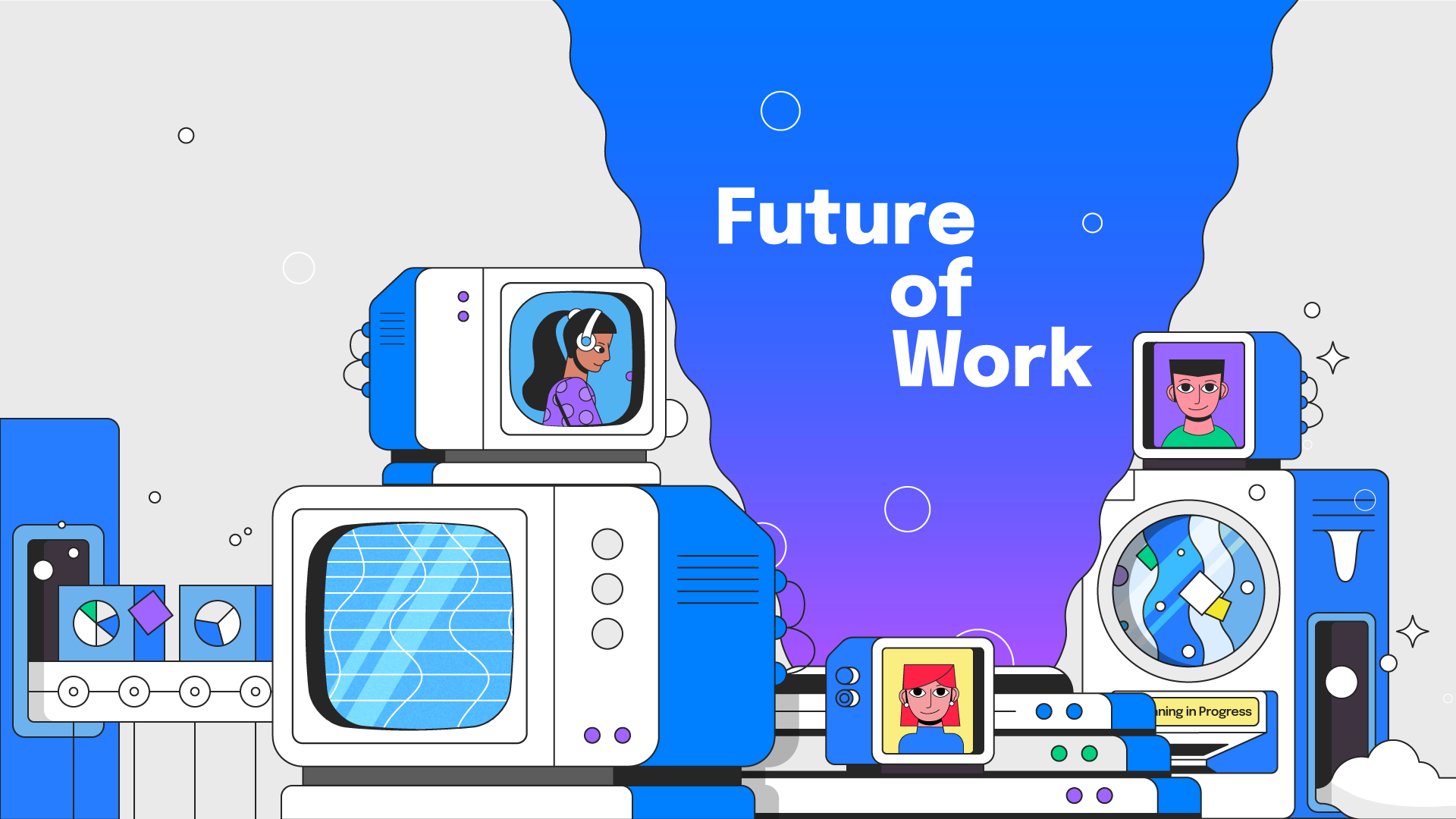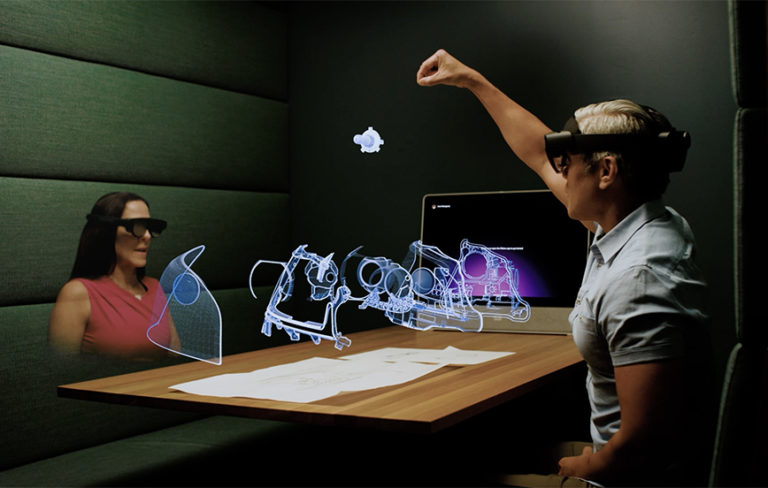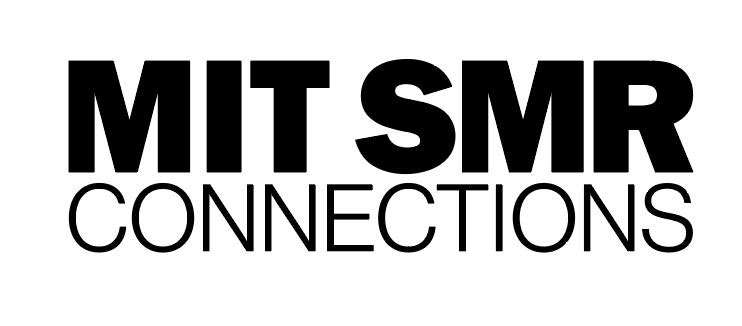The future of work is already here. And it’s changed the modern workplace.
Not that long ago, Artificial Intelligence (AI) felt like a concept that was “off in the distance.” But in 2022, AI is virtually everywhere. And in the next decade, it’s poised to transform all industries.
In fact, leaders are already using it to understand and make data-based predictions with and for their customers, employees, operations, and more.
So, what does that look like? What can employees and leaders expect from the future of work?
Let’s take a look.
Modern workplaces and the future of work
When we talk about the future of work, it’s discussed as if it’s something “far away” (just like AI).
But the reality is: the future of work is already here. And it’s changed the modern workplace. And there’s two big reasons why:
- Advancements in technology
- The pandemic
To unpack this, let’s explore what we mean when we say, “modern workplace.”
The modern workplace was created after WWII. It’s a military model that has strict hierarchies. Back then, the economy was heavily based in manufacturing and was tethered to a five-day workweek of 40 hours or more. Productivity, success, and career longevity was tied to how much time you were at your job and how fast you were working. This model also assumed there was a partner at home to handle the domestic labor.
The pandemic (with the help of technology) took that model and turned it on its head. It forced the majority of workforces to adopt remote work policies. And as a result, millions of people spent the last two years re-evaluating their priorities as they were forced to work through a pandemic either on the front lines or at home with their families next to them.
The word “work,” quite literally, got redefined.
AI and the future of work
We can think of AI as the ability of a machine to imitate intelligent human behavior, and machine learning is one expression of that. Correctly implemented, AI anticipates problems and deals with issues as they arise.
In this way, it enhances human performance and augments people’s capabilities. Instead of replacing employees, we can think of it as enabling and speeding up existing workflows. Its value lies in what it brings to a business, such as enhancing customer experiences, boosting productivity, and enhancing employee effectiveness.
And since the pandemic accelerated the digitalization of the economy, businesses, too, are accelerating their AI adoption plans to keep pace with the massive reshaping of the workplace.
So, what does that look like?
What AI helps leaders do
Predict employee attrition
The pandemic created almost three years’ worth of turbulence. And employees are emerging from it with different states of mind. They want to choose how they work and have changed expectations to enable success at work. Some even want entirely different careers. Employees are looking around and seeing evidence suggesting they can ask for and receive the reasonable things they want.
According to Forrester’s annual Employee Experience (EX) predictions report, just 48% of large organizations in the U.S. have a dedicated program for EX. And Forrester expects that number will rise to 65% as more executives watching their monthly quit rates go as high as 2% become EX advocates of the highest order.
The key to ensuring employee attrition remains low lies in a solid retention strategy. After all, good leaders know to invest in their people because they know without them, they wouldn’t be anywhere.
This is where AI can help.
AI can be a tool to understand which employees are at risk of leaving as well as identify practices and processes that might drive people to quit. According to the Work Institute’s 2020 Retention Report, 78% of the reasons employees quit could have been prevented by the employer.
Having the following types of information aids leaders in helping employees work better while also improving job satisfaction and work-life balance:
- At-risk-employee identification
- Management practices that drive employees to quit
- Areas for workflow/process improvement
- Methods for mitigating or improving employee support, engagement, and satisfaction
Leaders also leverage collaboration and people insights to combat common workforce fatigue and empower personal wellbeing, team impact, and inclusive collaboration. A little data can go a long way in keeping teams engaged, preventing workforce burnout, carving out focus time, and developing stronger working relationships.
With machine learning, a subfield of AI, HR managers have visibility into not only what happened, but understand why it happened, what will happen next, and how to adapt their workforce and management strategies to align with company objectives.
This helps HR foresee:
- Vacant positions
- Team budget needs
- What employee benefits they can improve to keep employees happy
- What departments are the most and least likely to stay at a position for a length of time
This helps management foresee:
- Workload imbalances and potential burnout
- Areas of process bottlenecks/failure and how to improve
- Common practices that strain employees and ways to address them
- Unnoticed activity and time-sinks that make employees less effective
Alleviate skills shortages
As we enter year two of the pandemic, businesses have found ways to adapt and shift, offering digital solutions for team collaboration, face-to-face meetings, and even virtual offsites.
These businesses will also need to support their employees with substantive reskilling at all levels of the organization.
According to McKinsey: “All technological skills, both advanced and basic, will see a substantial growth in demand…our research suggests that through 2030, the time spent using advanced technological skills will increase by 50% in the United States and by 41% in Europe.”
An AI-enabled learning ecosystem can tackle the skills gap challenge head-on. It can:
- Significantly augment scale and speed
- Fill skills shortages of the existing workforce through career-transition support tools
- Help employees do their existing and evolving jobs better and faster
The bottom line is that AI itself can help employees learn and re-skill in more effective ways, especially when we consider how the workplace is in the midst of a radical transformation.
Boost productivity
AI automates tedious, repetitive tasks ranging from processing data files to managing data pipelines. It can conduct complex calculations and pattern recognition, speed up processes, workflows, decision making, and more.
This means employees can spend time doing more meaningful work and make better use of their skills, rather than the meaningless elements of work that antagonize or disengage employees.
The problem, though, is that AI remains an out-of-reach concept for some.
Until recently, if a business wanted to embrace AI and machine learning, the only option then was to hire a small army of PHDs, software engineers, and data scientists to handle all that big data. As per a Dotscience report, most enterprises spend over 6 months on the journey to AI.
This problem is why leaders are turning to code-free tools. No-code AI is a code-free development system that empowers businesses using AI to perform various activities, such as data preprocessing, analysis, and building trained machine learning models to serve specific business purposes.
What used to be historically tedious tasks are becoming less complicated and time consuming. Anyone without a technical background can build machine learning models and predict outcomes in just a few clicks—without writing a single line of code.
This opens so many doors for businesses. Shifting to no-code AI automates and streamlines processes that used to take months or even years.
Depending on the industry you’re in, no-code AI can be used to automate tasks, including:
- Processes and workflows
- Decision-making
- Analyzing data
- Customer service
This shift to automation not only boosts productivity, it also enhances employee satisfaction. In other words, few employees miss the tedious, repetitive, time-consuming tasks AI-driven automation does for them. Whereas, almost all employees fully embrace having more time to focus on deep-thought work and contribute to their organization’s innovations. When implemented effectively, the benefits of AI-backed automation are felt by all.
Summary
As AI enhances human performance and augments people’s capabilities, it provides us with endless potential and opportunities. Prioritizing AI, machine learning, and automation technology throughout an organization’s processes is a powerful way to future-proof the workplace.





